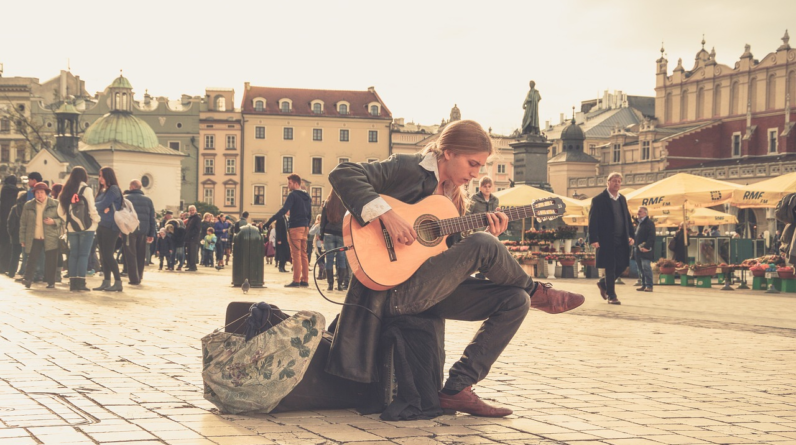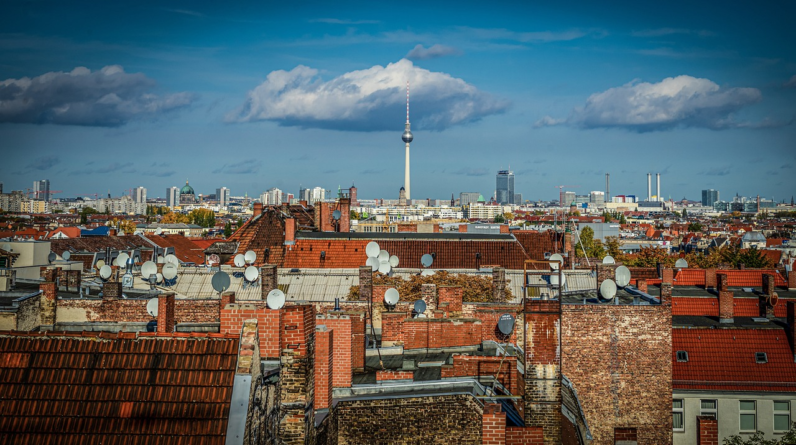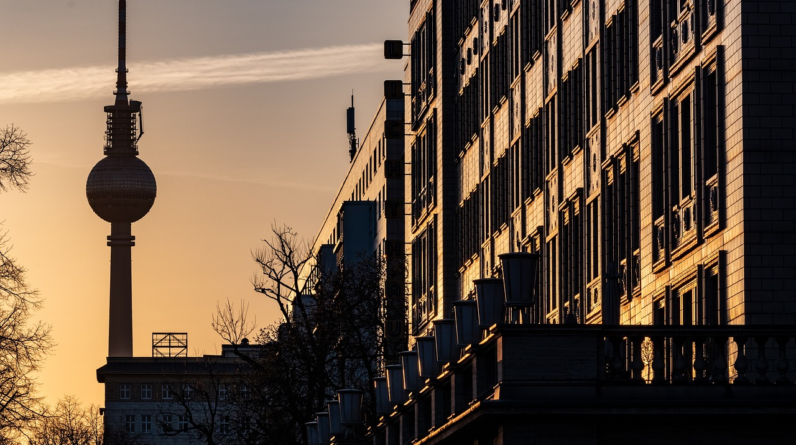
Welcome to Berlin, a city with a rich history and vibrant culture. As you wander through the streets, you will come across numerous squares and plazas that have played significant roles in shaping the city’s identity.
In this article, we will take you on a tour of some of the most famous squares and plazas in Berlin. First on our list is Alexanderplatz, one of the largest public squares in Europe. Located in the heart of the city, Alexanderplatz has been a hub for transportation, shopping, and entertainment for over 100 years. It is home to several iconic landmarks such as the Fernsehturm (TV Tower) and Weltzeituhr (World Time Clock), making it a must-visit destination for tourists and locals alike.
Join us as we explore other noteworthy squares and plazas including Gendarmenmarkt, Potsdamer Platz, Pariser Platz, Bebelplatz – each with their own unique stories to tell about Berlin’s past and present.
Alexanderplatz
Let’s head over to Alexanderplatz and see what all the buzz is about! Located in the heart of Berlin, Alexanderplatz is one of the most famous public squares in Europe.
This bustling plaza has been an important hub of activity since the 19th century when it served as a market square for local farmers. Today, Alexanderplatz is home to some of Berlin’s tallest buildings, including the iconic TV Tower.
Despite its modern appearance, Alexanderplatz is steeped in history and has undergone significant changes throughout the years. The square was heavily damaged during World War II and subsequently rebuilt during East Germany’s communist era.
In recent years, there have been ongoing renovation plans to improve the area’s infrastructure and make it more pedestrian-friendly. Despite these changes, however, Alexanderplatz remains an important cultural landmark that attracts visitors from all over the world due to its historical significance and vibrant atmosphere.
Gendarmenmarkt
The Gendarmenmarkt is a stunning location with beautifully designed buildings and a rich history. Located in the heart of Berlin, this square was once used as a market place for various goods.
Today, it has become one of the most popular tourist destinations due to its cultural significance and breathtaking architecture. The square is home to three iconic buildings – the Konzerthaus (Concert House), Französischer Dom (French Church), and Deutscher Dom (German Church).
Each building boasts unique architectural styles that reflect their historical significance. The Konzerthaus is known for hosting some of the city’s most prestigious cultural events and festivals like the Berliner Philharmoniker Orchestra.
With so much history and culture intertwined within this picturesque plaza, it’s no surprise that Gendarmenmarkt remains a must-visit destination for anyone traveling to Berlin.
Potsdamer Platz
You’re in for a treat as you explore Potsdamer Platz, where modern and historical Berlin seamlessly blend together. This famous square is located in the heart of the city and has undergone significant development over the years.
It was once a bustling transportation hub before it was destroyed during World War II. Today, Potsdamer Platz boasts impressive modern architecture that stands alongside the preserved remains of its past.
The development history of Potsdamer Platz dates back to 1838 when it was established as one of Berlin’s busiest squares. It became an important transportation center with train stations, bus stops, and streetcar lines connecting various parts of the city.
However, during World War II, much of the area was destroyed by bombing raids leaving only rubble behind. The square remained abandoned until after German reunification in 1990 when major redevelopment projects began transforming it into what we see today – a vibrant mix of commercial buildings, residential complexes, shopping centers, cinemas, and entertainment venues all surrounded by stunning modern architecture.
Pariser Platz
You’ll love exploring Pariser Platz. Here, you can soak in the grandeur of the Brandenburg Gate and take in the bustling energy of this lively area. This famous square is located at the heart of Berlin and has a rich history and significance.
It was named after Paris as a symbol of friendship between France and Prussia during their alliance against Russia. Pariser Platz is surrounded by magnificent buildings with intricate architecture, including Hotel Adlon, Academy of Arts, and French Embassy. The iconic Brandenburg Gate stands tall at one end of the square, marking its importance as a political landmark.
From here, you can also explore nearby attractions such as Tiergarten Park or take a stroll along Unter den Linden boulevard to witness Berlin’s vibrant culture.
Bebelplatz
Get ready to discover the captivating Bebelplatz, where you can immerse yourself in the beauty of its architecture and witness the remnants of a dark moment in history.
Located in the heart of Berlin, Bebelplatz is famous for its stunning ensemble of neoclassical buildings, including the State Opera and St. Hedwig’s Cathedral. But what makes this square truly remarkable is its historical significance.
In 1933, during the Nazi regime, thousands of books were burned on Bebelplatz as part of a propaganda campaign against ‘un-German’ ideas and literature. Today, a memorial designed by Israeli artist Micha Ullman marks this tragic event with an underground room filled with empty bookshelves lit from below.
Visitors can pay their respects to those who suffered under censorship and oppression while also enjoying a range of cultural events hosted on the square throughout the year.
Frequently Asked Questions
What is the history behind the naming of Alexanderplatz?
Did you know that Alexanderplatz was named after the Russian Tsar Alexander I, who visited Berlin in 1805?
The square has a long history and significance in Berlin’s urban development. Its transformation over time reflects the city’s changing political and social landscape.
During the Cold War, it became a symbol of East German power and was heavily developed with imposing architecture.
After reunification, it underwent significant renovations to make it more pedestrian-friendly and welcoming to visitors.
Today, Alexanderplatz is a bustling hub of activity, with shopping centers, restaurants, and transportation hubs all located within its boundaries.
Its evolution continues as plans are underway for further redevelopment in the coming years.
Are there any famous events or festivals that take place at Gendarmenmarkt?
Famous events and stunning architecture highlights make Gendarmenmarkt a must-see destination in Berlin. This historic square hosts several important cultural festivals throughout the year, including the Classic Open Air Festival and Christmas Market.
The beautiful concert hall and twin churches, French Cathedral and German Cathedral, are both prominent landmarks that add to the grandeur of this bustling plaza.
Whether you’re looking for a relaxing day out or an immersive cultural experience, Gendarmenmarkt is sure to impress with its rich history and vibrant atmosphere.
What is the significance of the Sony Center in Potsdamer Platz?
The Sony Center in Potsdamer Platz, Berlin is an architectural marvel that serves as an innovation hub for the city. It’s a symbol of modernity and progress, with its unique design and state-of-the-art technology.
The significance of the Sony Center lies in its ability to bring together different industries and create a collaborative environment for creativity and innovation. It houses offices, shops, restaurants, cinemas, and even apartments – making it a one-stop destination for entertainment and business alike.
Whether you’re looking to catch a movie or attend a conference, the Sony Center is sure to impress with its sleek design and cutting-edge facilities.
What is the story behind the iconic Brandenburg Gate located in Pariser Platz?
If you’re looking for an iconic piece of Berlin’s history and culture, look no further than the Brandenburg Gate in Pariser Platz.
This historic monument has played a significant role in shaping Berlin’s identity over the years.
Originally built as a symbol of peace, it was later used by the Nazis as a symbol of their power before being damaged during World War II.
After the war, it became a symbol of reunification when East and West Germany were reunited.
Today, it stands as one of the most recognizable symbols of Germany and is visited by millions of tourists each year.
Its evolution over time reflects the changing political landscape and cultural values that have shaped Berlin into what it is today.
Are there any hidden historical gems or unique features to look out for in Bebelplatz?
As you step onto Bebelplatz, you’re transported back in time to one of the most significant moments in German history.
This square, tucked away in the heart of Berlin, is home to some of the city’s most unique architectural features and hidden historical gems.
From the stunning neoclassical buildings that line the square to the underground library memorializing books burned by Nazis during World War II, Bebelplatz is a must-see destination for any history buff or architecture enthusiast.
Its historical significance cannot be understated as it was also the site of infamous book burnings ordered by Nazi Minister Joseph Goebbels in 1933.
So take a stroll through this beautiful square and discover its hidden treasures for yourself!
Conclusion
Overall, Berlin is home to some of the most iconic and historic squares and plazas in Europe. From Alexanderplatz, known for its bustling energy and towering TV tower, to Pariser Platz, home of the famous Brandenburg Gate, these public spaces offer a glimpse into the city’s rich history and culture.
If you’re planning a trip to Berlin, be sure to add these must-visit destinations to your itinerary. Take a stroll through Gendarmenmarkt’s majestic architecture or admire the futuristic buildings at Potsdamer Platz. And don’t forget Bebelplatz – while it may not be as well-known as its counterparts, it played an important role in German history during World War II.
No matter which square or plaza you choose to visit, you’re sure to be captivated by their unique charm and significance.







